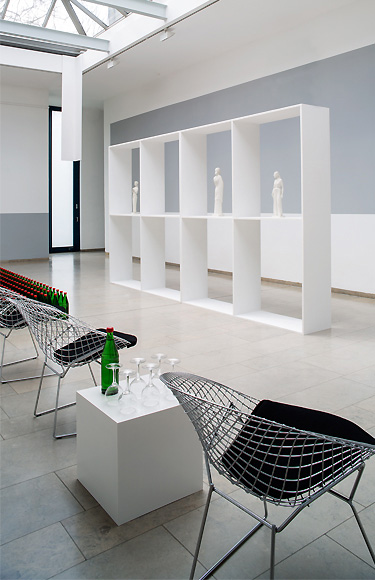Excerpt from "Telling spaces" (see texts)
But furnishings can also leave the viewer’s space and become artworks, particularly when they are placed on pedestals like sculptures used to be (and thus switch to another space). Penelope Curtis showed this in 2007 by presenting Henry Moore’s (1898–1986) King and Queen and Ludwig Mies van der Rohe’s (1886–1969) Barcelona Sessel / Barcelona Chair together on a black carpet. In this staging she was alluding to the two chairs in Mies van der Rohe’s German Pavilion for the 1929 International Exposition, on which nobody except the King and Queen of Spain were permitted to sit. Although these were furnishings, they were clearly located in a different space. But the viewer could ponder from personal experience how it might feel to have permission to sit on this luxurious furniture. The two armchairs had become sculpture.
Helwing parodies this noble history of furniture as a throne by giving pride of place under the overall title Barcelona to the Diamant Sessel / Diamond Chairs from the Museum's inventory. Designed in 1950 by Harry Bertoia (1915–1978), in art-historical terms these pieces of furniture represent the transition between sculpture and seating. In Helwing’s exhibition they once again become furniture for sitting on. Displayed in the same space are porcelain figures made by Marcks in the last year of his life, when a large number of figurative sculptors were rediscovering the medium of porcelain. Arie Hartog
Material: MDF boards, water bottles, glasses, museums pedestal, Bertoia Diamond chairs, works by Gerhard Marcks from the series "sculptors of 20th century work in porcellain":
Halgerd (1978), Aliena (1981), Custodian (1981)





